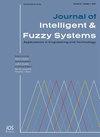多无人机编队形状的确定:基于需求满足和球面模糊ANP的TOPSIS方法
IF 1
4区 计算机科学
Q3 COMPUTER SCIENCE, ARTIFICIAL INTELLIGENCE
引用次数: 0
摘要
多架无人机编队形状是指多架无人机编队飞行时的几何形状,描述了它们的相对位置。它在多无人机协同中发挥着提高性能、避免碰撞、为控制提供参考的必要作用。该研究旨在确定在特定任务中最合适的多无人机编队形状,以满足不同甚至相互冲突的需求。该方法引入需求满足和球面模糊分析网络过程(SFANP),改进了基于理想解相似度的排序偏好技术(TOPSIS)。首先,构建了多无人机能力准则及其评价模型;其次,将性能数据转化为能力的需求满意度,并统一到一个相同的尺度中。基于球面模糊集和非线性变换函数对效益、成本和区间指标进行了定性判断和量化。然后,利用SFANP处理决策准则之间的相互关系并确定其全局权重,该方法考虑了决策的模糊性和犹豫性,将决策者的偏好域扩展到球面上;最后,根据TOPSIS对备选的地层形状进行排序,根据它们到正理想解和负理想解的距离进行排序。以9架无人机执行搜索攻击任务为例,对所提方法进行了验证,并进行了对比分析,验证了所提方法的适用性和可信度。本文章由计算机程序翻译,如有差异,请以英文原文为准。
Determination of multi-UAVs formation shape: Using a requirement satisfaction and spherical fuzzy ANP based TOPSIS approach
Multiple unmanned aerial vehicles (multi-UAVs) formation shape refers to the geometric shape when multi-UAVs fly in formation and describes their relative positions. It plays a necessary role in multi-UAVs collaboration to improve performance, avoid collision, and provide reference for control. This study aims to determine the most appropriate multi-UAVs formation shape in a specific mission to meet different and even conflicting requirements. The proposed approach introduces requirement satisfaction and spherical fuzzy analytic network process (SFANP) to improve the technique for order preference by similarity to ideal solution (TOPSIS). First, multi-UAVs capability criteria and their evaluation models are constructed. Next, performance data are transformed into requirement satisfaction of capability and unified into a same scale. Qualitative judgments are made and quantified based on spherical fuzzy sets and nonlinear transformation functions are developed for benefit, cost, and interval metrics. Then, SFANP is used to handle interrelationships among criteria and determine their global weights, which takes decision vagueness and hesitancy into account and extends decision-makers’ preference domain onto a spherical surface. Finally, alternative formation shapes are ranked by their distances to the positive and negative ideal solution according to the TOPSIS. Furthermore, a case study of 9 UAVs performing a search-attack mission is set up to illustrate the proposed approach, and a comparative analysis is conducted to verify the applicability and credibility.
求助全文
通过发布文献求助,成功后即可免费获取论文全文。
去求助
来源期刊

Journal of Intelligent & Fuzzy Systems
工程技术-计算机:人工智能
CiteScore
3.40
自引率
10.00%
发文量
965
审稿时长
5.1 months
期刊介绍:
The purpose of the Journal of Intelligent & Fuzzy Systems: Applications in Engineering and Technology is to foster advancements of knowledge and help disseminate results concerning recent applications and case studies in the areas of fuzzy logic, intelligent systems, and web-based applications among working professionals and professionals in education and research, covering a broad cross-section of technical disciplines.
 求助内容:
求助内容: 应助结果提醒方式:
应助结果提醒方式:


